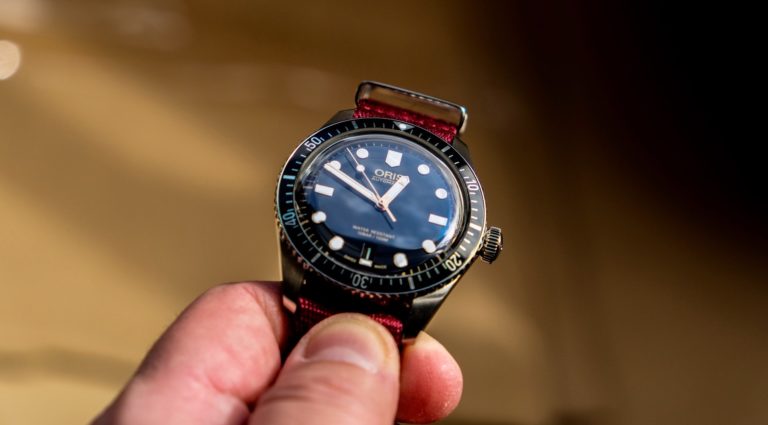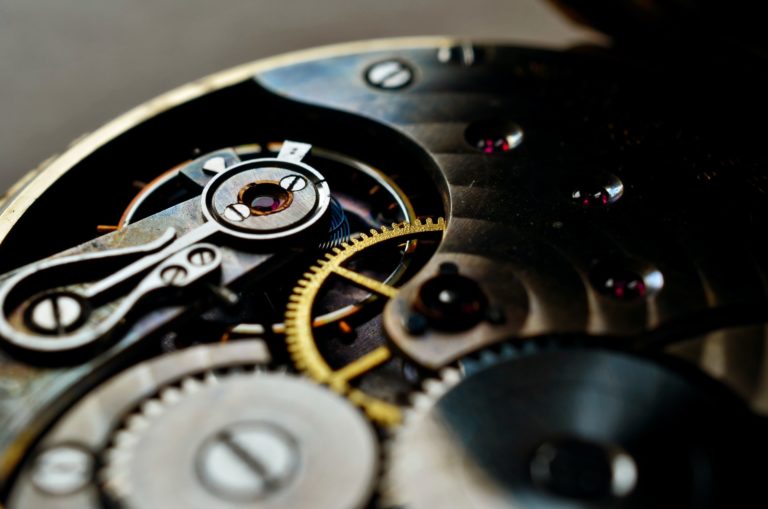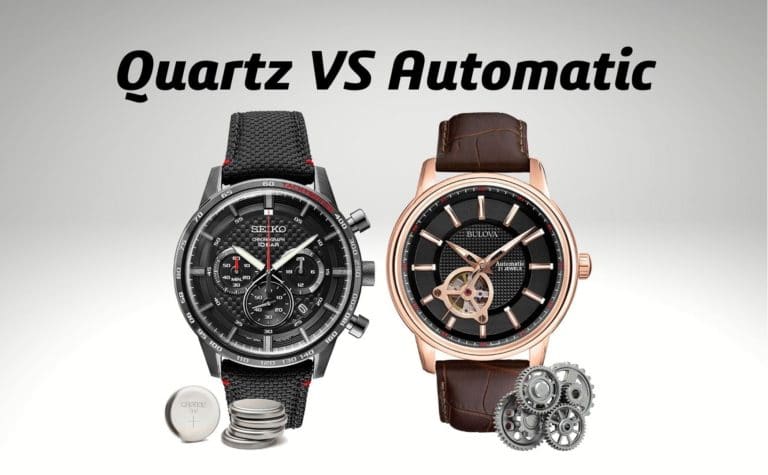Affiliate Disclosure: As an Amazon Associate I earn from qualifying purchases. Details
Buying your first automatic watch is a decision that requires thorough groundwork. Since it has an entirely different working mechanism compared to a quartz watch, you’ll have a lot of things that are different. Some of the things are highly appreciated, but some require extra attention.
In the following article, I will be discussing all there is to know about automatic watches.
This will include everything from what they are, how they work, their pros and cons, and how they compare to quartz watches. We’ll also give you tips on evaluating the quality of the watches.
By the end of this guide, you’ll be an expert on all things automatic watches!
- What Is An Automatic Watch?
- How Long Does An Automatic Watch Last?
- How To Wind An Automatic Watch?
- How Do The Watches Work?
- Advantages & Disadvantages of Automatic Watches
- How Do Automatic Watches Compare To Quartz Watches?
- Evaluating the Quality of Automatic Watches
- Prices
- Upkeep & Maintenance
- Final Words
What Is An Automatic Watch?
Now, let’s start from the very beginning – what is an automatic watch in the simplest explanations?
An automatic watch is a mechanical watch that uses energy from the wearer to power itself instead of needing to be manually wound. It has a metal weight called a rotor that spins when you move your hand, and this way winds the watch.
Therefore, automatic watches differ from old-school mechanical watches in the way the energy is generated – while manual-wind timepiece has nothing but a crown for creating energy, the automatic equivalent possesses a freely spinning rotor that does the job for you.
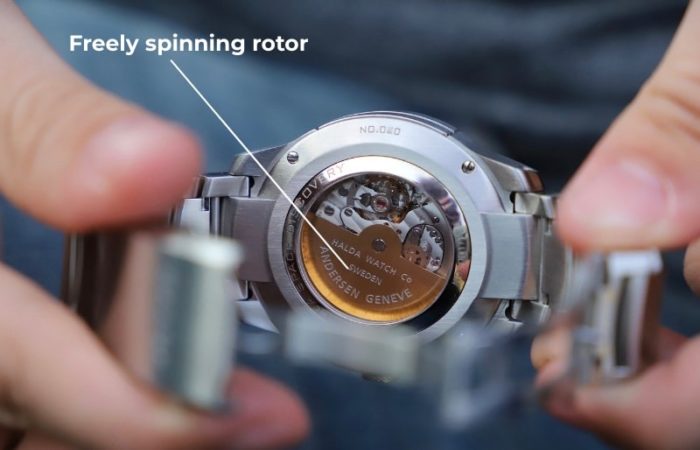
Automatic wristwatches usually come with a manual winding option, too, despite the existence of a spinning rotor doing the job.
Why is that so?
It is because the rotor isn’t always able to wind the watch completely. However, through the manual winding of the crown, the watch gets fully energized.
How Long Does An Automatic Watch Last?
Now, you might be wondering about the length an automatic watch holds a charge once fully energized.
The amount of time a mechanical/automatic watch will run after it’s fully wound is called a power reserve, and it is typically around 40 to 50 hours. However, the power reserve can stretch even to 60-80 hours with more advanced movements.
This means the watch will continue to run for at least 40-50 hours after being taken off your wrist. Therefore, you can leave the watch on a bedside table for the night and find it still running in the morning.
However, due to the relatively short time constraint, it can happen that the energy runs out, and your automatic watch stops. How to reignite it, then?
How To Wind An Automatic Watch?
There are two ways how you can get your automatic watch running again:
1) By shaking it – give the watch a 10-15-second shake so that the spinning rotor can wind the mechanism; or when the watch is on the wrist, tilt it back and forth 20-30 times
2) By using the crown – turn the crown clockwise about 30-40 times, or until you feel resistance
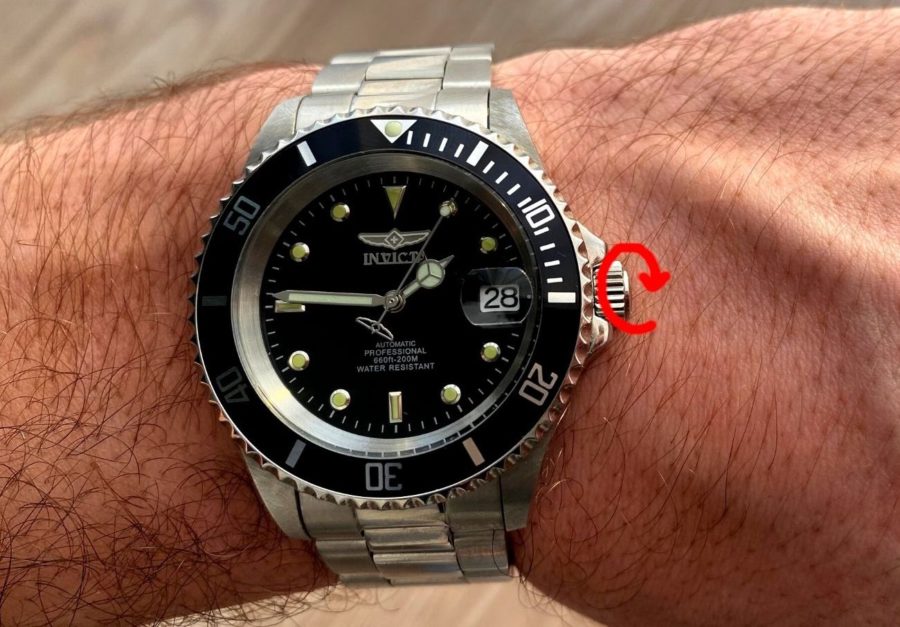
There’s also the third option to keep your automatic watch constantly charged. However, it is not that prevalent.
It involves a special tabletop box called a watch winder. You just place your watch inside, and the winder spins and swirls, in that keeping the timepiece(s) always wound.
To learn more about these three options, check out our watch winding tutorial.
Now you’ve probably reached the point where you have some understanding of how an automatic watch works – it needs to be in motion to get the rotor spinning and the watch wound.
However, automatic watches consist of more than a hundred miniature parts that all have an important job to do. Therefore, there is more to the movement than just the rotor.
To better understand the complicated mechanism, let’s have a closer look at the working mechanism.
How Do The Watches Work?
As already said, everything starts from the motions of the wearer.
When moving the wrist, the rotor starts to spin, creating energy that is then accumulated in the mainspring.
From the mainspring, the accumulated energy travels through gears into the escapement, which measures it into equal parts. The parts of energy are then received by a balance wheel that starts to beat back and forth at a constant rate.
Eventually, with every beat, the energy is forwarded to the hands through the gears, and the watch starts ticking.
For a better overview, see the graphic explanation below or visit our thorough explanation of the working mechanism.
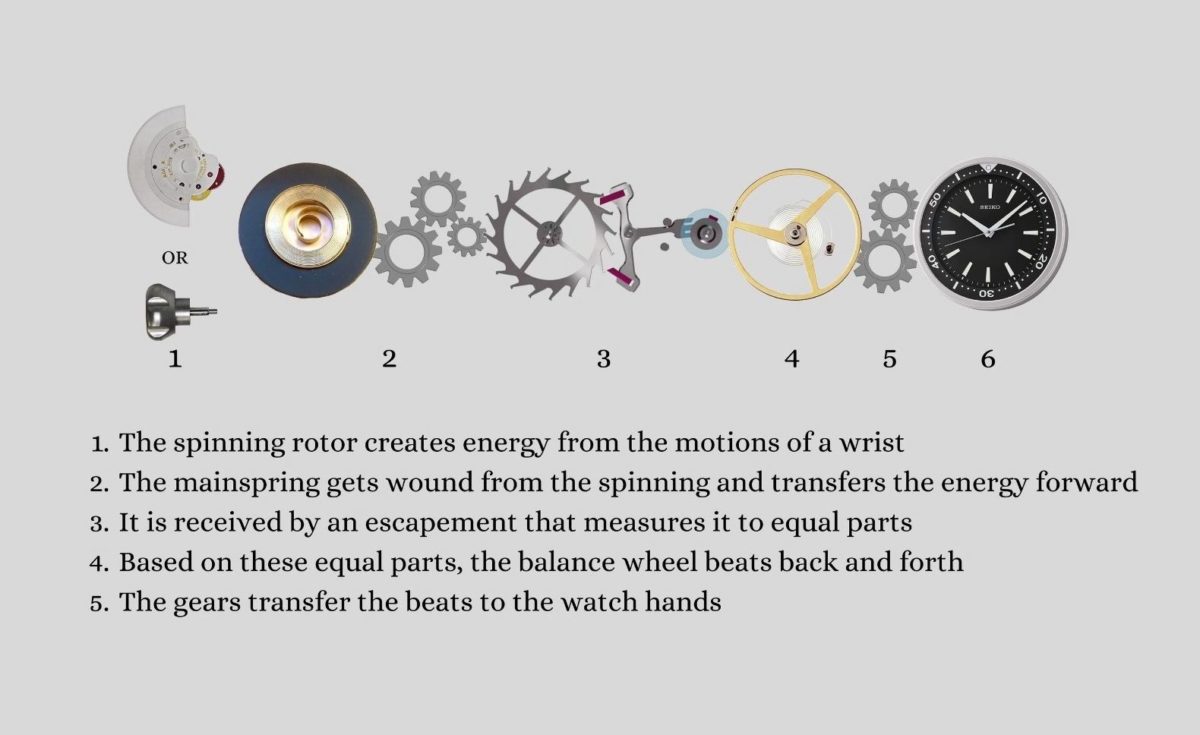
Advantages & Disadvantages of Automatic Watches
The complex mechanism of an automatic caliber makes it highly appreciated by watch aficionados for several reasons. On the other hand, it’s not perfect as it also has some considerable disadvantages.
First, let’s look at the factors that make automatic watches so coveted.
Advantages
1. Luxuriousness – The very first reason why automatic watches are so popular is their luxuriousness. The mechanism that consists of more than a hundred tiny parts hand-assembled by professionals is just sheer genius. What’s incredible is that the eye-catching engineering is often displayed through a transparent caseback or via a skeletonized dial.
In addition, when you look at the luxury watches from Rolex, Omega, Hublot, or any other, they are always equipped with precisely automatic movements.
2. No battery – Another significant advantage of automatic watches is that they don’t require any batteries. It means you don’t ever have to worry about the battery running empty or wasting time on replacing it.
3. Sweeping hand – Due to the specifics of the automatic movement, you’ll get a very appealing sweeping motion of the second hand. Instead of taking one step in a second, a typical automatic timepiece takes 6-8 steps a second.
4. Value – Automatic watches can last for decades, if not generations. It also means that a quality timepiece (especially a limited edition model) can be an investment that costs a whole lot more in the future.
Disadvantages
1. Low power reserve – The most significant disadvantage of self-winding watches is their low power reserve compared to other watch movements. The watches need frequent wearing or winding to keep them running.
2. Accuracy – Another concern is accuracy. When quartz watches deviate around 15 seconds a month, automatic watches lose or gain about 15-30 seconds a day. It means the watches aren’t very accurate.
The accuracy depends on various factors, from gravity and friction to temperature changes and magnetism. To learn more about it, see our post on automatic watch accuracy.
3. Price – Automatic timepieces cost more than quartz or solar watches. Due to the complexity and sophistication of the caliber, it takes more time to produce and requires pricier components.
How Do Automatic Watches Compare To Quartz Watches?
Now, you may wonder, which one is better – an automatic watch or another popular type, a quartz watch? Because this is one of the principal choices you have to make when buying a watch.
To be frank, there’s no unequivocal answer because both movement types have their pros and cons and suit different occasions and people. We have already covered the quartz vs. automatic comparison in more detail, but let’s go over it briefly.
When it comes to automatic watches, they are more luxurious because of their intricate calibers. This allows several eye-catching features that quartz watches don’t have, such as sweeping hands, see-through casebacks, skeleton dials, and tourbillons. The watches don’t need batteries, which is another factor that makes automatics a better option than quartz watches.
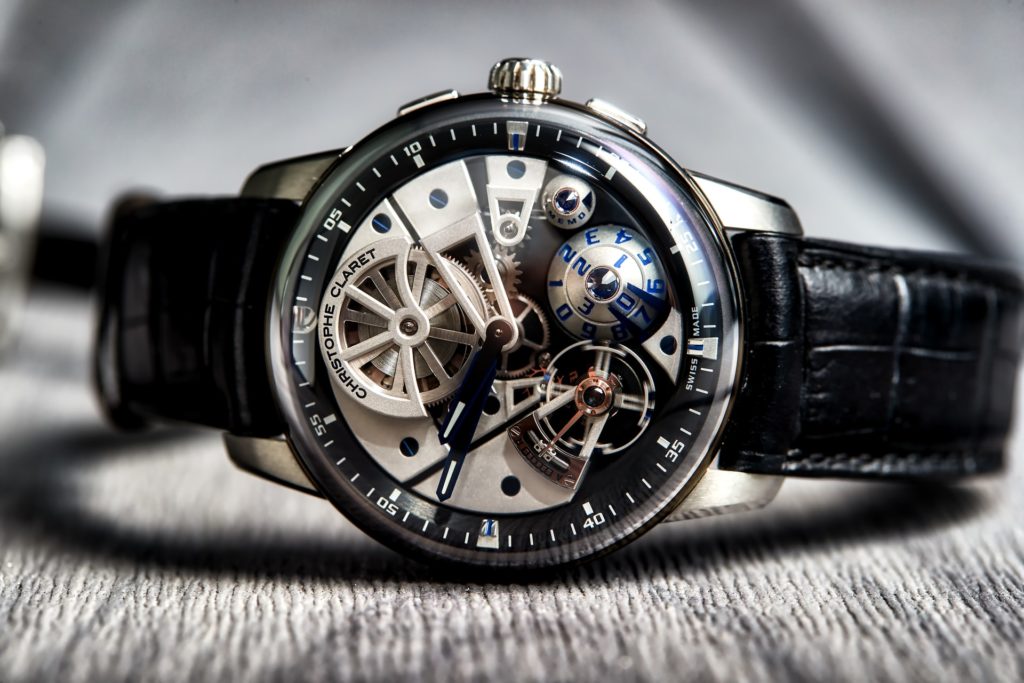
Quartz watches, on the other hand, are way more accurate. It is the most significant reason why people choose a quartz watch over an automatic one. The watches are also more affordable and don’t require any winding. You can leave the watch in the drawer for several months without worrying it runs out of energy.
Therefore, the decision of choosing between the two is down to personal preferences.
However, one thing’s for sure – automatic watches are more appreciated, more famous, and with better longevity compared to quartz watches. Quality automatic watches can last decades and even generations if properly cared for.
Evaluating the Quality of Automatic Watches
But how to make sure the watch you’re buying is a quality automatic timepiece that lasts decades?
For that, you have to evaluate the inside of the watch rather than the outside. It is said that a true watch aficionado decides based on the movement and not the looks or any extravagant extras.
Accuracy
Manufacturers typically state the accuracy of their calibers. Usually, it is anywhere between +/- 20 and 40 seconds per day. However, most watches don’t reach the upper margins but stay around 15 to 25 seconds per day.
It means that it can lose 19 seconds one day and the next day 12 seconds. On the other hand, some calibers gain seconds instead of losing.
All things considered, a general rule defining an accurate automatic caliber is that it won’t deviate more than 20-25 seconds a day. If it is more, the movement isn’t the best.
Since calibers have their defined deviation brackets and not what they mostly perform, it is not always easy to know the real numbers. Therefore, I suggest you read the reviews of the calibers from watch forums and e-commerce sites where the owners typically mention the accuracy numbers they get.
However, if your budget allows, you can go for chronometer watches. These are certified accurate mechanical watches that have passed rigid tests. The accuracy of such timepieces remains between +6 and -4 seconds per day.
Frequency
Another factor to consider is the frequency of calibers.
Watchmakers typically use the terms bph (beat per hour) or vph (vibrations per hour). The higher the frequency, the more accurate the movement usually is because it can read out smaller fractions of a second.
Also, the higher frequency rate shows craftsmanship and sophistication, which go hand in hand with quality.
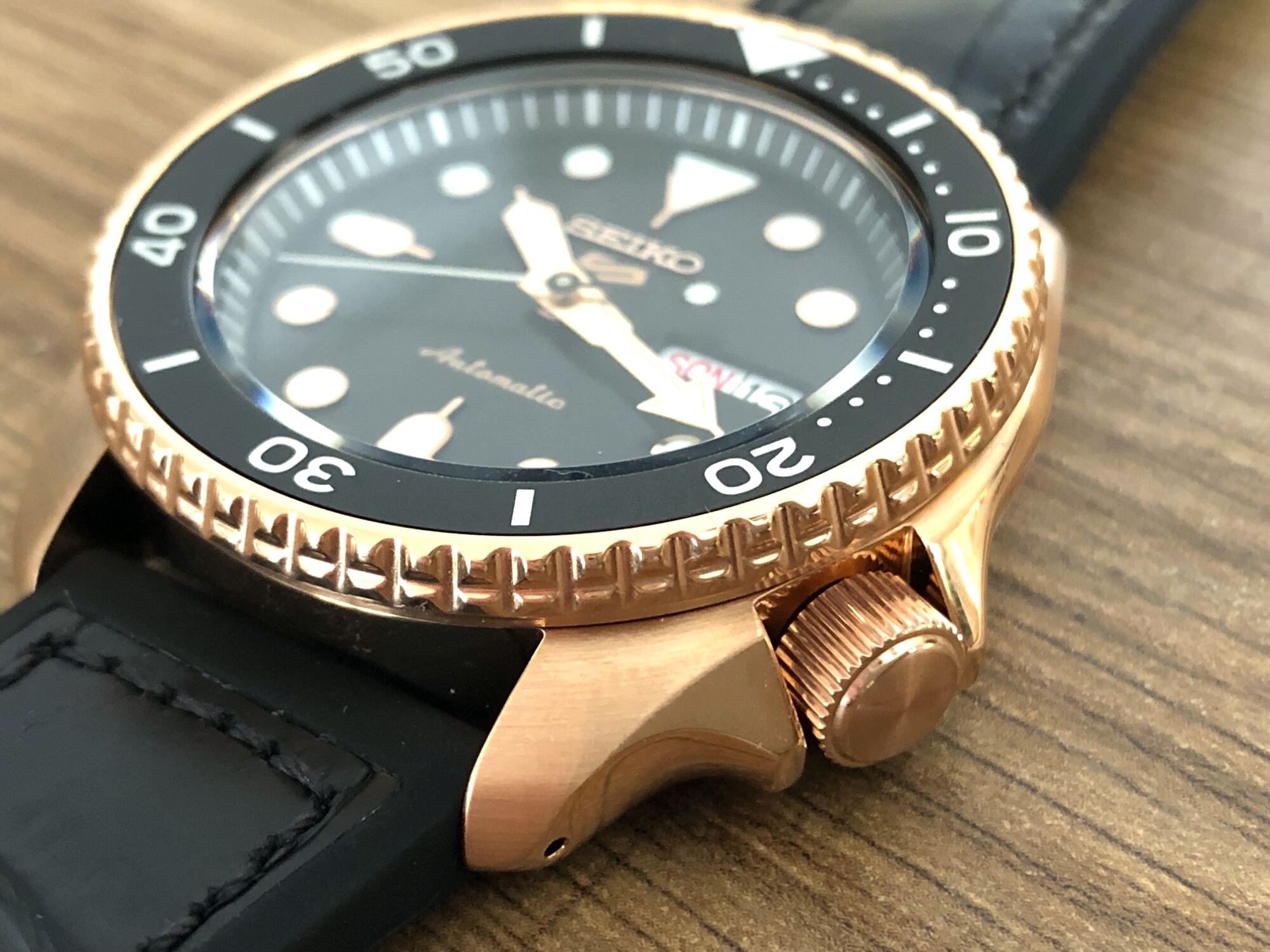
The most common frequency of an automatic caliber is 21,600 bph, followed by 28,800 bph. Anything that stays lower than 21,600 is not considered high-quality, and anything that exceeds 28,800 is deemed luxury.
Power Reserve
We covered the term power reserve earlier in our post, and it is the time period the watch runs after it’s fully wound.
The majority of automatic watches have a 40-42h power reserve, which is pretty much the standard with mechanical calibers. However, there are some calibers that boast 70-80h reserves, such as ETA’s Swissmatic and Powermatic 80 movements employed by Tissot and Hamilton. Also, most luxury watches have similar figures.
Therefore, a quality automatic watch should feature at least 40 hours of power reserve. Anything lower is less convenient and doesn’t suggest a long-lasting and quality caliber.
Hack & Hand-Wind
If the watch features a hack function, it means the second hand halts when you change the time. It allows for the second-precision time synchronization.
The hand-winding feature, however, allows you to manually wind the watch on top of the self-winding function, ensuring the maximum exploitation of the power reserve.
Not all automatic watches come with these features. But the ones that do are highly appreciated by the wearers as they add convenience and the possibility to take the maximum out of the caliber.
However, there are several non-hacking and non-hand-winding movements that are high-quality. For example, the 7S26 and 7S36 Seiko calibers employed by the iconic Seiko SKX series watches don’t hack or hand-wind but are still real workhorses with excellent reliability.
Regardless, these two features are a sign of quality and should be considered when buying an automatic watch.
Complications
In watch jargon, a complication is any function other than the display of the time.
For example, the date function is a complication. Also, the chronograph and moon phase are complications. The more the watch has complications, the more luxurious it is.
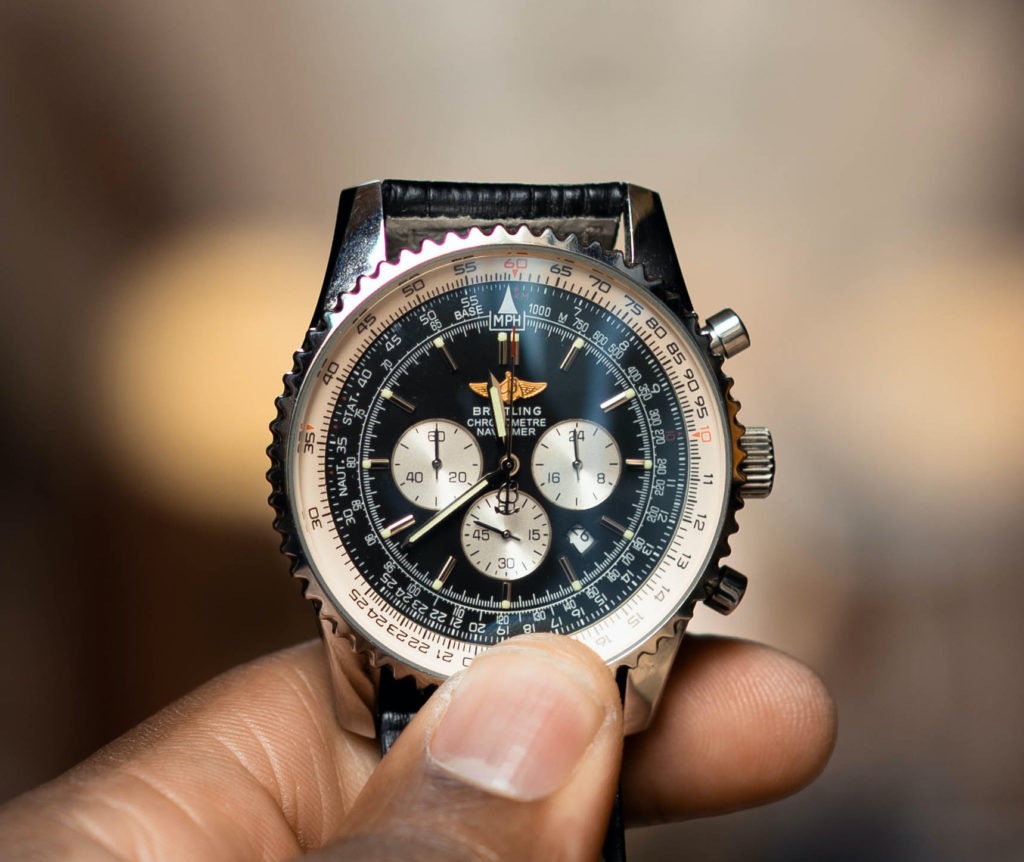
It also means the more complicated the caliber is, which shows the craftsmanship and sophistication.
Therefore, the quality of an automatic watch can also be assessed by the number of complications it features.
Prices
Although automatic watches are much pricier than quartz or solar-powered timepieces, there is a broad selection in various price ranges. As a result, you can get the watch for as less as $150, but you can also pay thousands of dollars for a luxury-level timepiece.
However, for first-time wearers to get acquainted with this type of watch, it is advisable to go for affordable options. Fortunately, the selection of quality yet affordable automatics is vast.
For instance, you can refer to our list of the best automatics for less than $200. These watches are spot-on entry-level wearables that possess decent quality levels. Orient and Seiko are the brands with the broadest selection for sub-$200 watches.
However, if you have more money to spend, the selection and quality get even better. For example, $500 automatic watches will offer improved water resistance, hacking and hand-winding features, and even Swiss-made labels.
When it comes to premium-class automatic watches, the prices stay anywhere between $1,000-$3,000. Tag Heuer and Longines are the most notable brands at this price range. These watches offer additional complications, such as the moon phase, chronograph, and GMT.
Luxury automatic watches start from $5,000 and come from the most famous brands in the watch industry, including Omega, Rolex, Breitling, Patek Philippe, Hublot, etc. Besides the various complications and famous names, they also hold value and can be profitable investments, as well as family heirlooms.
Upkeep & Maintenance
But how to care for such intricate timepieces?
The truth is that the best way to keep automatic watches in the best state possible is to wear them regularly. It ensures that the lubrication between the moving parts doesn’t dry or wear off.
Also, make sure not to expose your watch to extreme temperatures or highly humid conditions. Since the parts of the movement are prone to temperature, it can affect the accuracy and reliability of the caliber. In addition, humidity can ruin the gaskets that protect the watch from the water intruding into the mechanism.
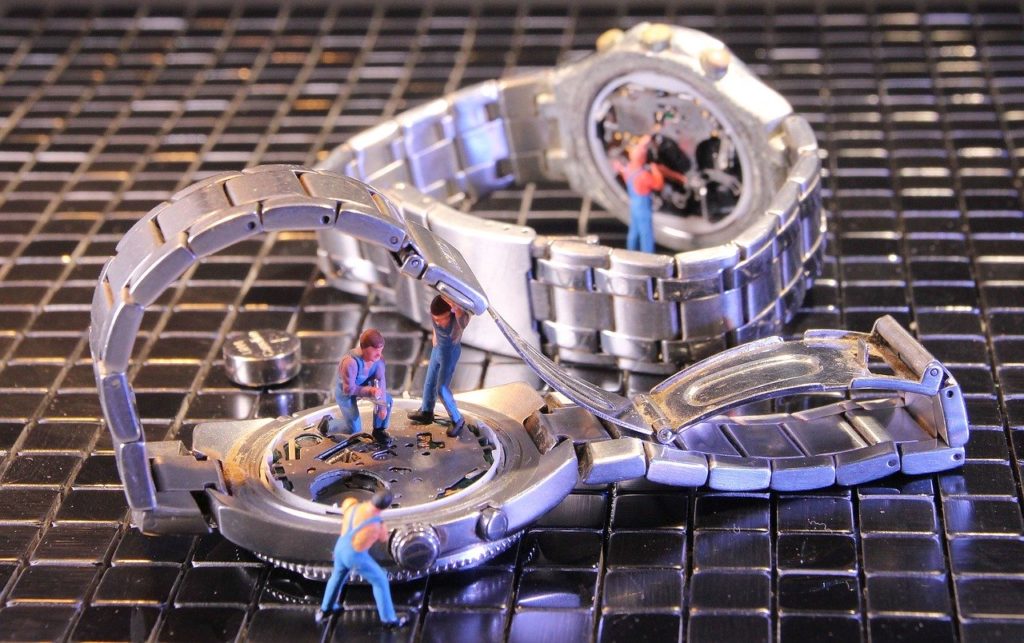
What you should also know is that automatic watches require professional servicing every three to seven years, depending on the manufacturer’s suggestions. The caliber gets lubricated, cleaned from dust, and the worn-out parts replaced, ensuring accuracy and a long lifetime.
Final Words
If you’ve decided to take up the journey of introducing yourself to the world of automatic watches, there is a lot of ground to cover. They are very different from other watch movements regarding build, characteristics, and upkeep. They also require more of your attention.
On the other hand, the advantages of self-winding watches often outweigh the negatives. Therefore, it’s no wonder they are highly sought-after and appreciated in the watch community.
However, not all automatic watches are the same – there are low-quality watches, and there are durable and reliable watches. In order to end up with a long-lasting and dependable automatic watch, you should make some groundwork about the brands and the calibers.
I can assure you that once you’ve bought yourself your very first automatic watch, it will not be your last.
You may also like:
Affiliate Disclosure: As an Amazon Associate I earn from qualifying purchases. Details
- CIGA Design Blue Planet Gilding Watch: The Best Conversation Starter Around? - April 2, 2023
- CIGA Design X-Series Review: The Most Skeleton for the Money? - July 7, 2022
- What Is A Dive Watch? A Complete Guide - May 17, 2022

